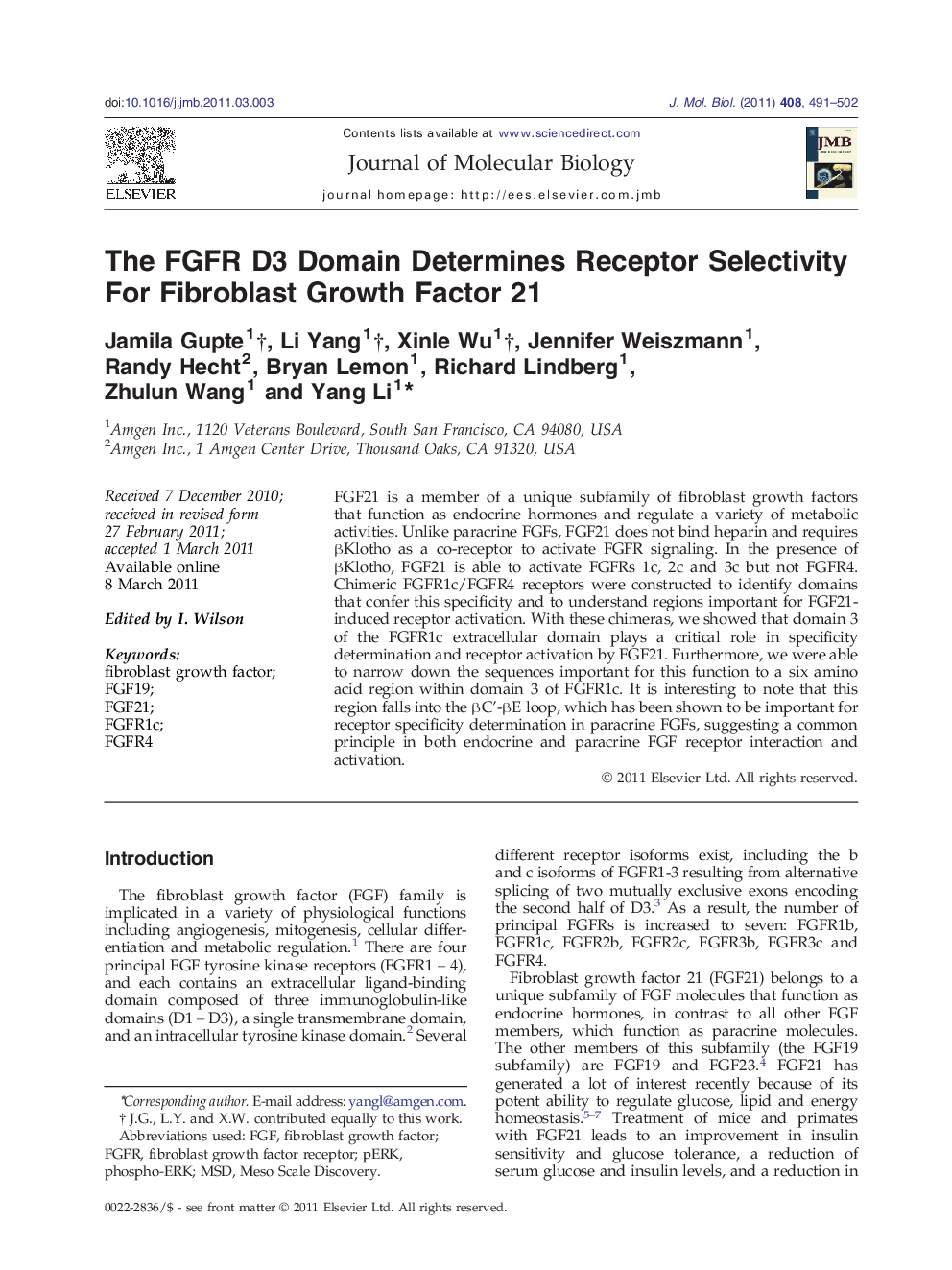| Article ID | Journal | Published Year | Pages | File Type |
|---|---|---|---|---|
| 2185326 | Journal of Molecular Biology | 2011 | 12 Pages |
FGF21 is a member of a unique subfamily of fibroblast growth factors that function as endocrine hormones and regulate a variety of metabolic activities. Unlike paracrine FGFs, FGF21 does not bind heparin and requires βKlotho as a co-receptor to activate FGFR signaling. In the presence of βKlotho, FGF21 is able to activate FGFRs 1c, 2c and 3c but not FGFR4. Chimeric FGFR1c/FGFR4 receptors were constructed to identify domains that confer this specificity and to understand regions important for FGF21-induced receptor activation. With these chimeras, we showed that domain 3 of the FGFR1c extracellular domain plays a critical role in specificity determination and receptor activation by FGF21. Furthermore, we were able to narrow down the sequences important for this function to a six amino acid region within domain 3 of FGFR1c. It is interesting to note that this region falls into the βC’-βE loop, which has been shown to be important for receptor specificity determination in paracrine FGFs, suggesting a common principle in both endocrine and paracrine FGF receptor interaction and activation.
